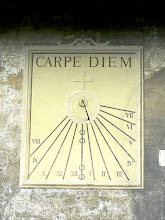SAMUEL TAYLOR COLERIDGE

PHOTO: Samuel Taylor Coleridge
_______________________________
SAMUEL TAYLOR COLERIDGE
***********************
Samuel Taylor Coleridge (1772-1834), was an English lyrical poet, critic, and philosopher, whose 'Lyrical Ballads',(1798) written with WILLIAM WORDSWORTH, started the English Romantic movement.
Samuel Taylor Coleridge was born in Ottery St Mary, Devonshire, as the youngest son of the vicar of Ottery St Mary.
After his father's death Coleridge was sent away to Christ's Hospital School in London. He also studied at Jesus College.
In Cambridge Coleridge met the radical, future poet laureate Robert Southey.
He moved with Southey to Bristol to establish a community, but the plan failed.
In 1795 he married the sister of Southey's fiancée Sara Fricker, whom he did not really love.
Coleridge's collection 'Poems On Various Subjects' was published in 1796, and in 1797 appeared as Poems.
In the same year he began the publication of a short-lived liberal political periodical 'The Watchman'.
He started a close friendship with Dorothy and William Wordsworth, one of the most fruitful creative relationships in English literature.
From it resulted 'Lyrical Ballads', which opened with Coleridge's "Rime of the Ancient Mariner" and ended with Wordsworth's "Tintern Abbey".
These poems set a new style by using everyday language and fresh ways of looking at nature.
The brothers Josiah and Thomas Wedgewood granted Coleridge an annuity of 150 pounds, thus enabling him to pursue his literary career.
Disenchanted with political developments in France, Coleridge visited Germany in 1798-99 with Dorothy and William Wordsworth, and became interested in the works of Immanuel Kant.
He studied philosophy at Göttingen University and mastered the German language.
At the end of 1799 Coleridge fell in love with Sara Hutchinson, the sister of Wordsworth's future wife, to whom he devoted his work "Dejection: An Ode" (1802).
During these years Coleridge also began to compile his Notebooks, recording the daily meditations of his life.
In 1809-10 he wrote and edited with Sara Hutchinson the literary and political magazine The Friend.
From 1808 to 1818 he gave several lectures, chiefly in London, and was considered the greatest of Shakespearean critics.
In 1810 Coleridge's friendship with Wordsworth came to a crisis, and the two poets never fully returned to the relationship they had earlier.
Suffering from neuralgic and rheumatic pains, Coleridge had become addicted to opium.
During the following years he lived in London, on the verge of suicide.
He found a permanent shelter in Highgate in the household of Dr. James Gillman, and enjoyed an almost legendary reputation among the younger Romantics.
During this time he rarely left the house.
In 1816 the unfinished poems "Christabel" and "Kubla Khan" were published, and next year appeared "Sibylline Leaves".
According to the poet, "Kubla Khan" was inspired by a dream vision.
His most important production during this period was the Biographia Literaria(1817).
After 1817 Coleridge devoted himself to theological and politico-sociological works.
Coleridge was elected a fellow of the Royal Society of Literature in 1824.
He died in Highgate, near London on July 25, 1834.
==================================
.....


0 Comments:
Post a Comment
<< Home